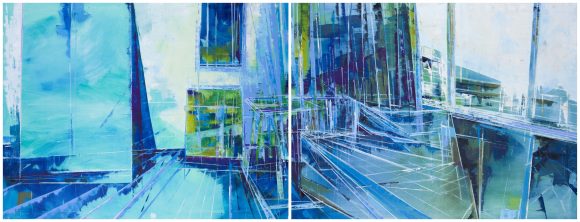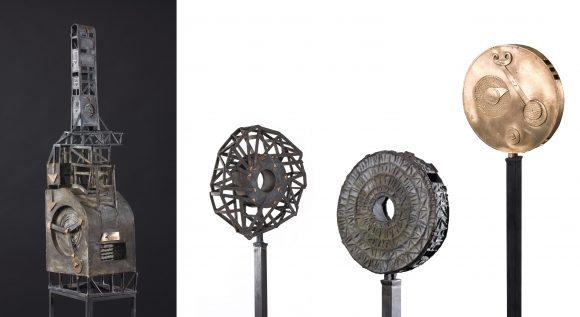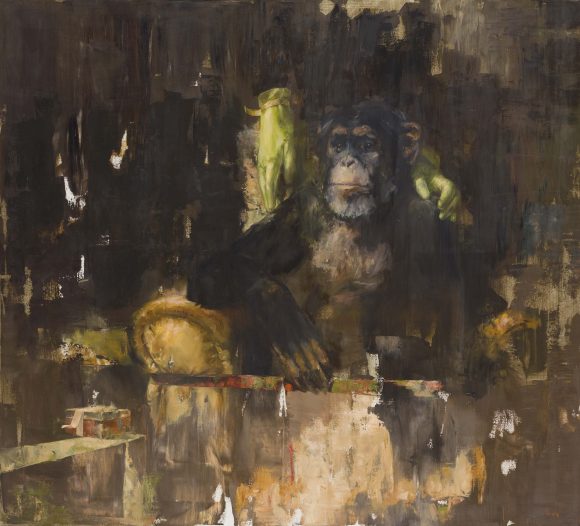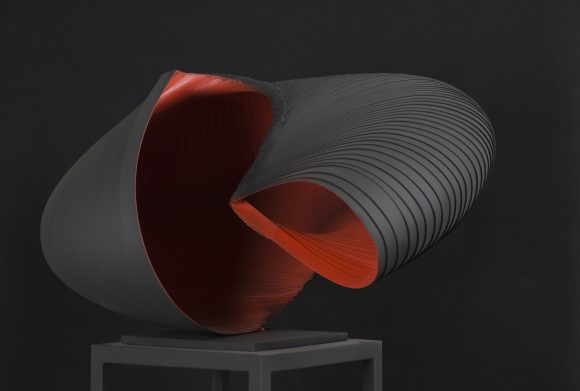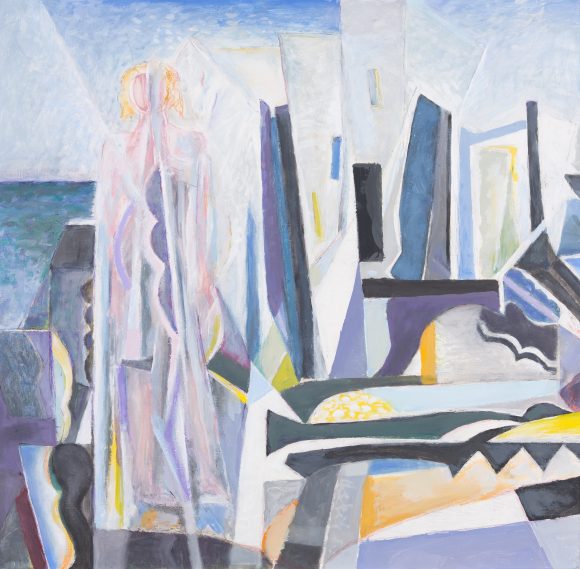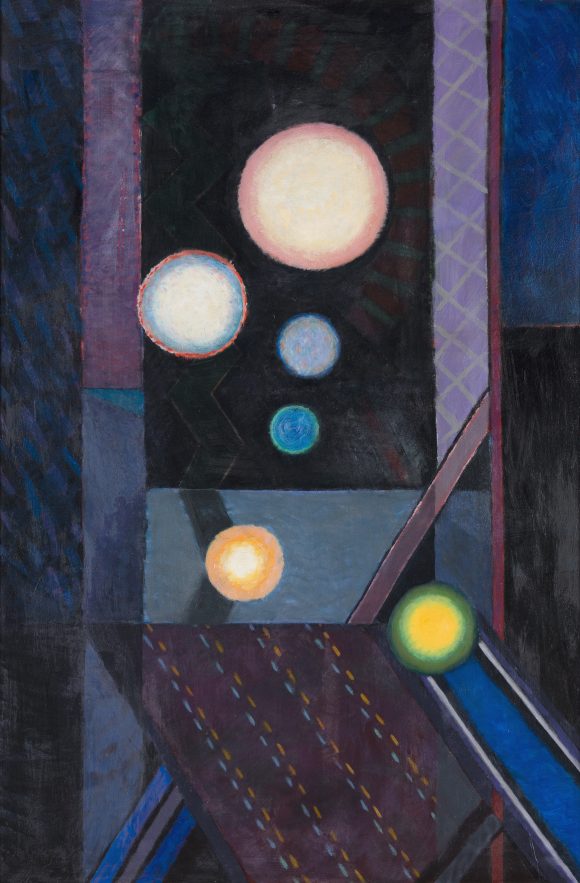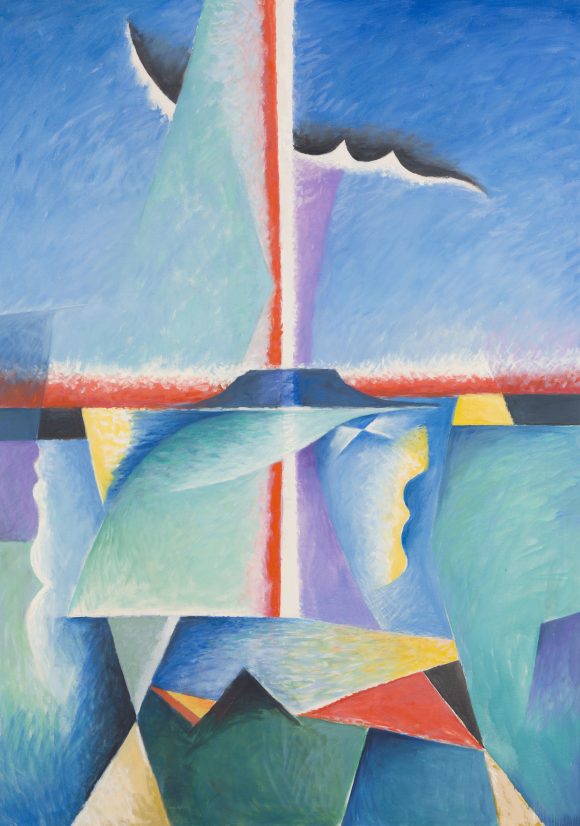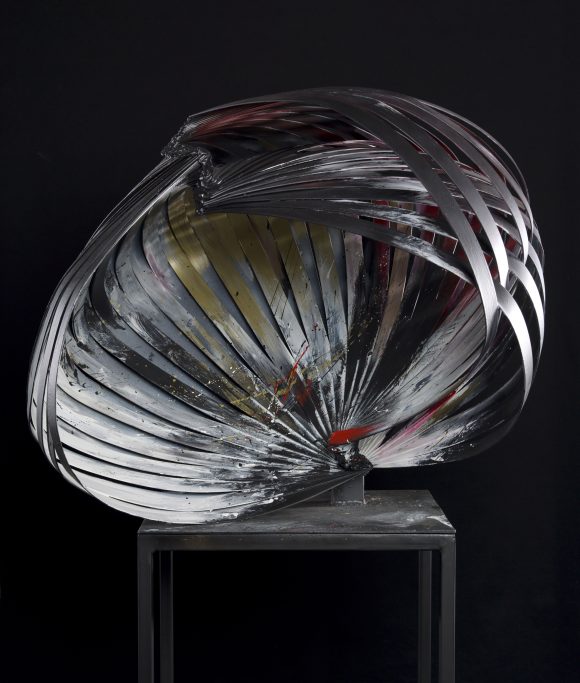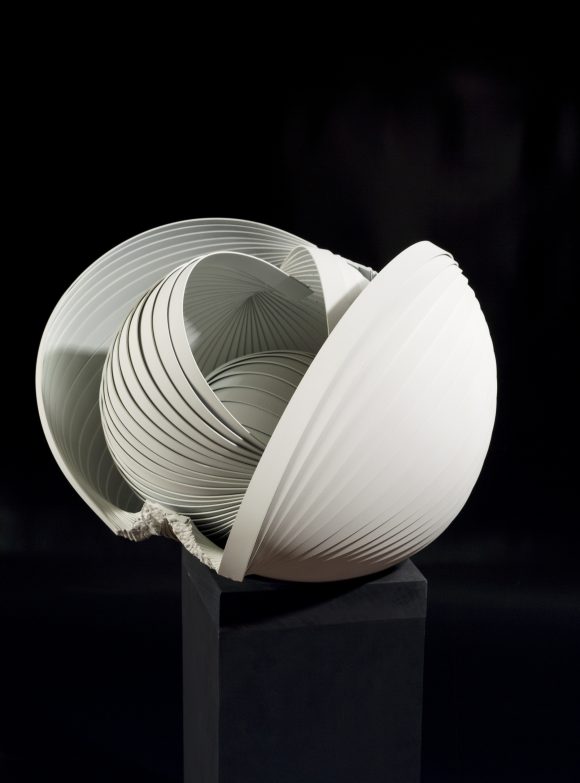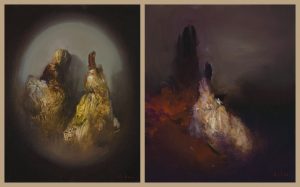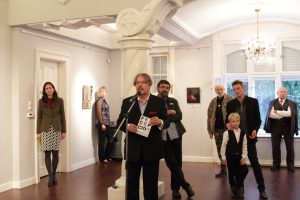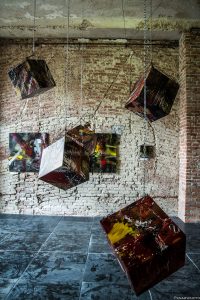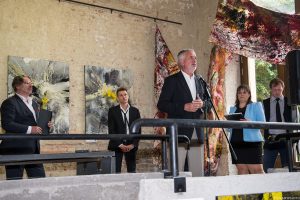We say goodbye to our exhibition Perceptions 3.-evolution- with “Blue Room” by Ákos Esse Bánki. The greatest honour of the large canvas is its movement, owing to the playfulness of the perspective. We can see a room dreamed in blue, its parts were demolished by the artist’s fantasy, to rebuild it with constructive elements. The objects appear with scetchy lines, just as the planes of the space. These drawn objects seem extentionless. Also these lines are not just drwing forms, but also determine the experience of the perspective, they are leading are eyes mainly into the center of the picture. This is the point where the painting thickens, and the point where the two parts of the artwork separate, which is a hardly noticable, but an important momentum. In experiancing the perspectivity of space the variety of colours have a great role, especially the streaming of paint by the lines, and the dark shades of blue. Ákos Esse Bánki treats the theme of the exhibition, evolution, in a special way, he takes it as a personal, inner process. We can observe the development of the picture and its phases on his cavas “Blue Room”, from interpreting the physical world to effacing the paint.
written by: Zsófi Máté
photo: misi
Ákos Esse Bánki: Blue Room (130×340 cm, oil on canvas, 2015)

